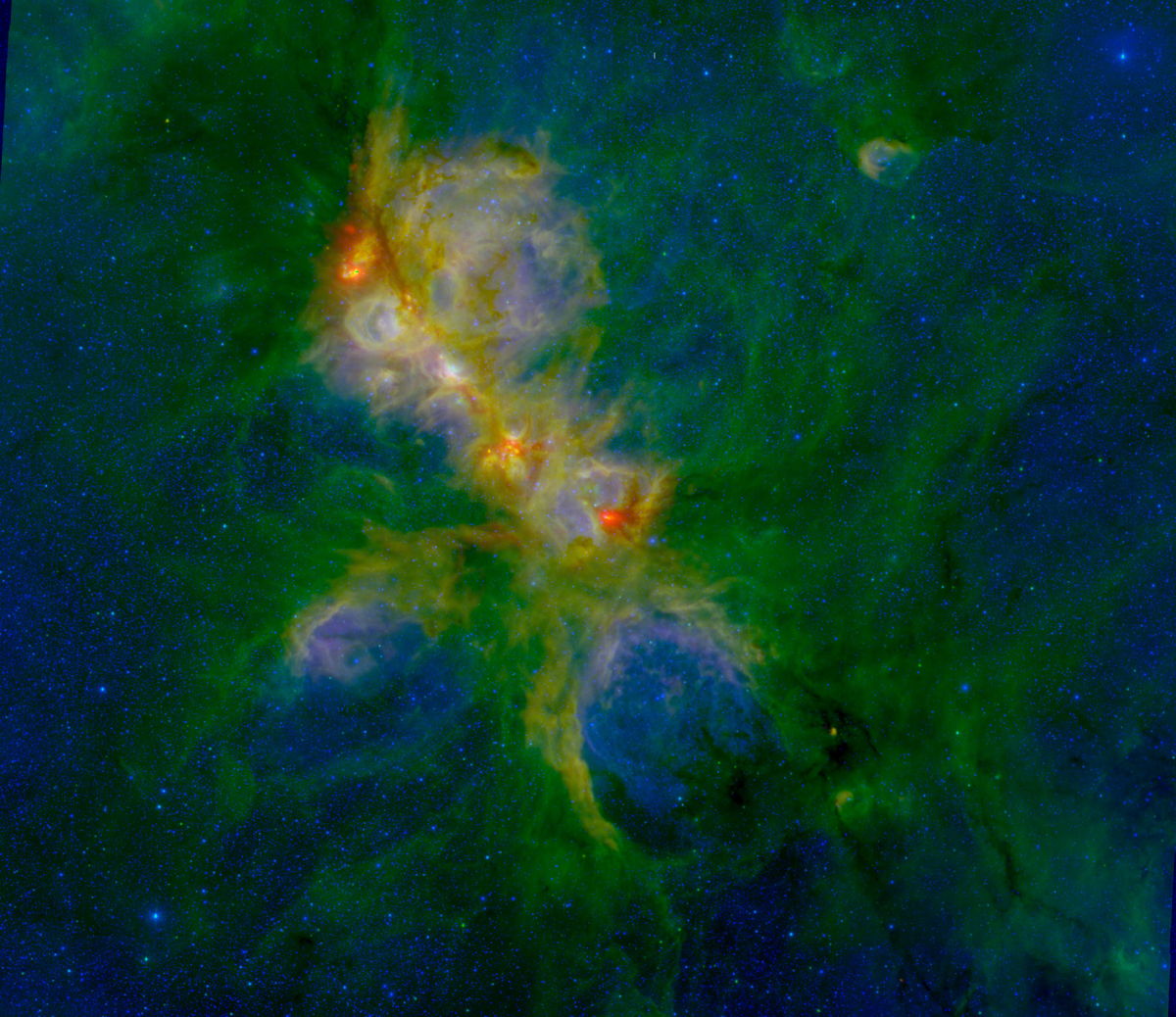'Cat's Paw Nebula' Bursting with New Star Growth

INDIANAPOLIS — A nebula that shines about 5,500 light-years from Earth could be going through a "baby boom," according to a new study.
NGC 6334 (the Cat's Paw Nebula) might be one of the most productive star-forming regions in the Milky Way. The nebula is home to tens of thousands of newly formed stars and plays host to about 200,000 suns' worth of star-creating material.
"NGC 6334 is forming stars at a more rapid pace than Orion — so rapidly that it appears to be undergoing what might be called a burst of star formation," the study's lead author Sarah Willis of the Harvard-Smithsonian Center for Astrophysics (CfA) and Iowa State University said in a statement. "It might resemble a 'mini-starburst,' similar to a scaled-down version of the spectacular bursts sometimes seen in other galaxies."
More than 2,000 of the stars in the nebula are very young and are still trapped inside the "dusty cocoons" that birthed them, scientists said. Willis presented the new findings here today (June 5) at the 222nd meeting of the American Astronomical Society.
Astronomers have observed distant, bright starbursting galaxies before, but because the Cat's Paw Nebula is a region within the Milky Way, scientists can get a better sense of why starburst regions might form and what they look like closer-up.
"Because NGC 6334 is nearby, astronomers can probe it in much greater detail, even down to counting the numbers of individual stars of various types and ages," CfA officials wrote.
Astronomers are still trying to investigate the origin of the starburst. Some researchers think that a blast from a supernova explosion or galactic collisions could create starbursts; however, neither of those explanations appear to explain the Cat's Paw Nebula's recent activity.
Get the Space.com Newsletter
Breaking space news, the latest updates on rocket launches, skywatching events and more!
Scientists expect that the starburst will last for a relatively short amount of time in cosmic terms. In total, NGC 6334's burst will probably endure for only a few million years.
"We’re lucky, not only because it’s nearby but also because we’re catching it while the starburst is happening," Willis said.
Follow Miriam Kramer @mirikramer and Google+. Follow us @Spacedotcom, Facebook and Google+. Original article on SPACE.com.
Join our Space Forums to keep talking space on the latest missions, night sky and more! And if you have a news tip, correction or comment, let us know at: community@space.com.

Miriam Kramer joined Space.com as a Staff Writer in December 2012. Since then, she has floated in weightlessness on a zero-gravity flight, felt the pull of 4-Gs in a trainer aircraft and watched rockets soar into space from Florida and Virginia. She also served as Space.com's lead space entertainment reporter, and enjoys all aspects of space news, astronomy and commercial spaceflight. Miriam has also presented space stories during live interviews with Fox News and other TV and radio outlets. She originally hails from Knoxville, Tennessee where she and her family would take trips to dark spots on the outskirts of town to watch meteor showers every year. She loves to travel and one day hopes to see the northern lights in person. Miriam is currently a space reporter with Axios, writing the Axios Space newsletter. You can follow Miriam on Twitter.









